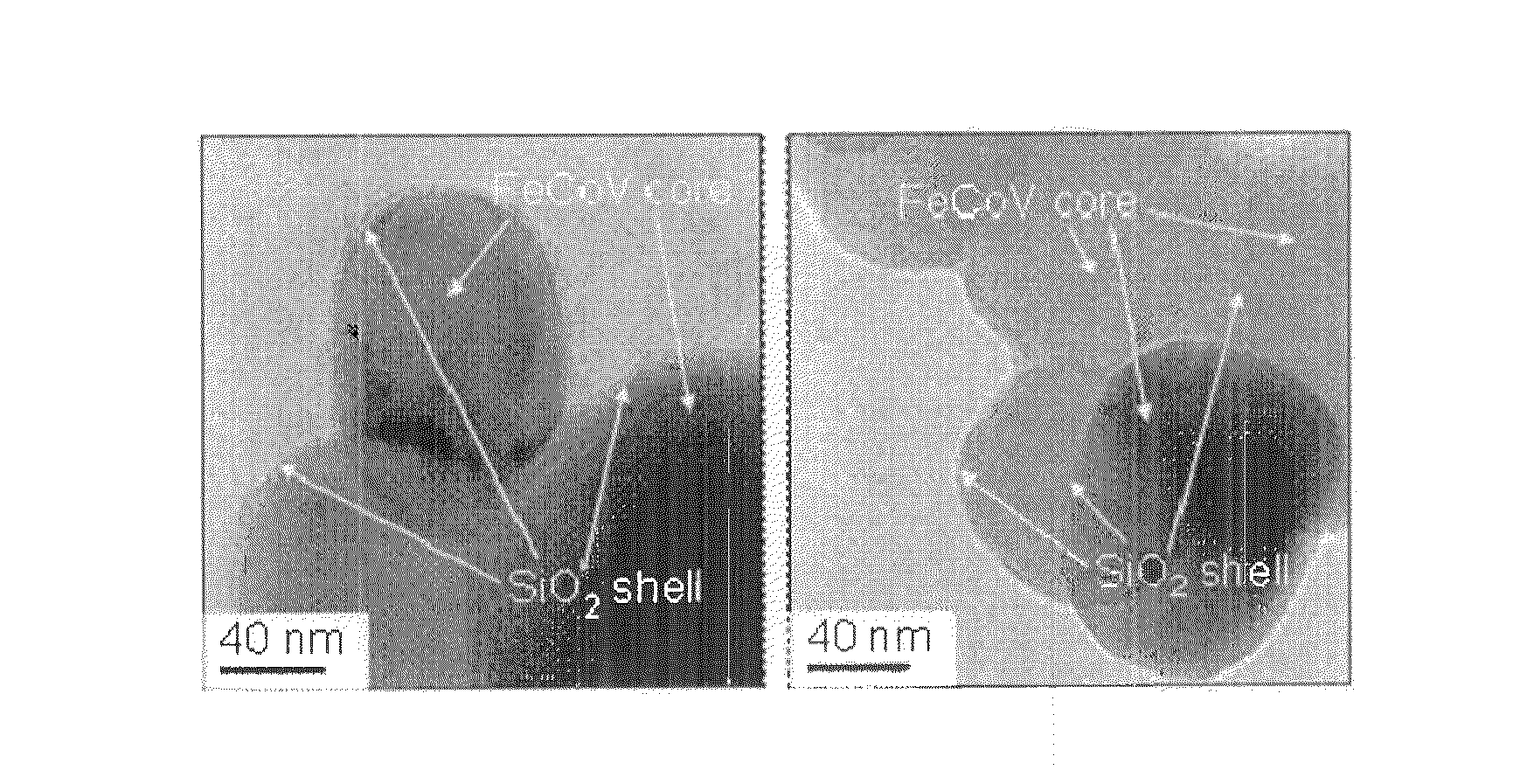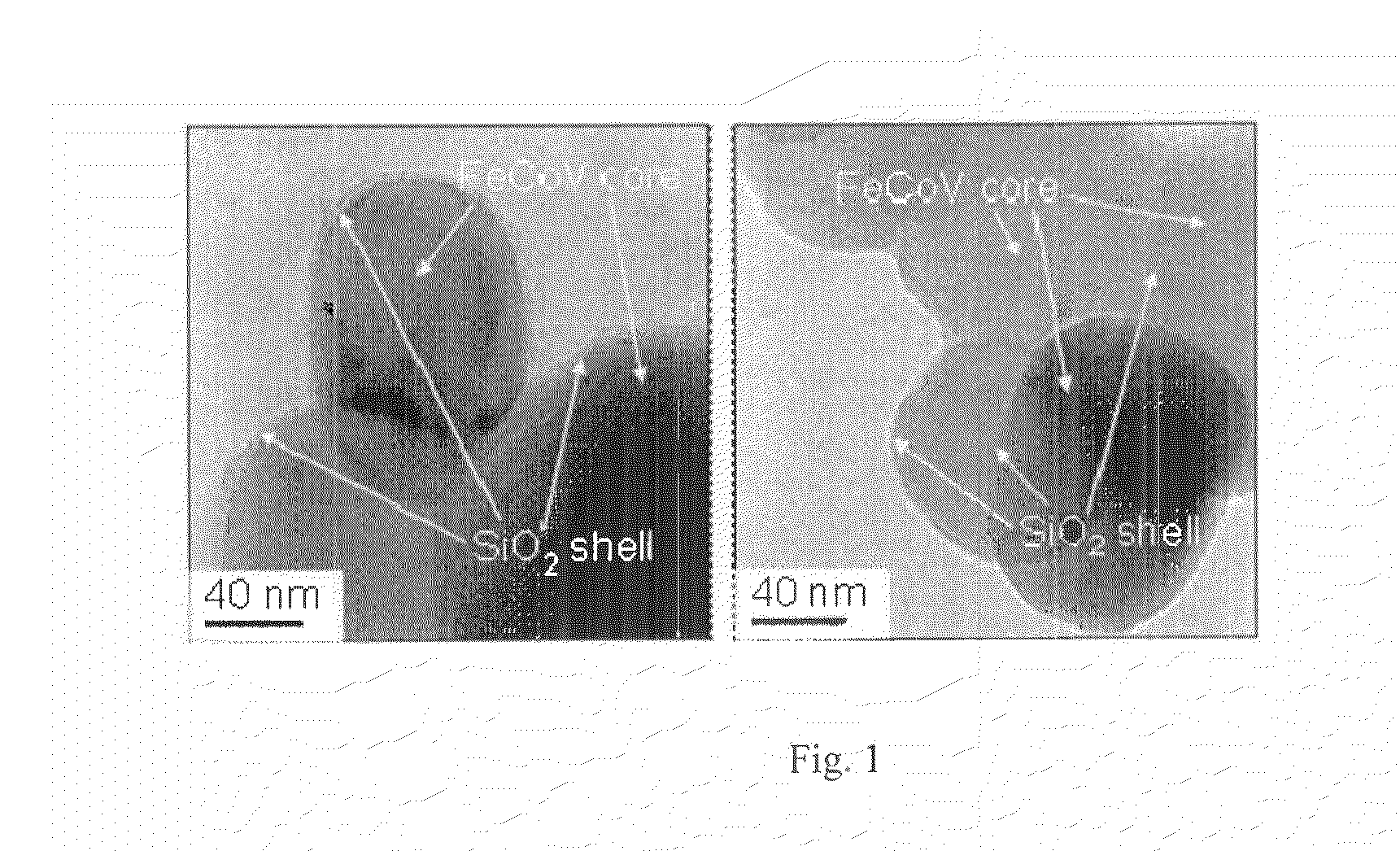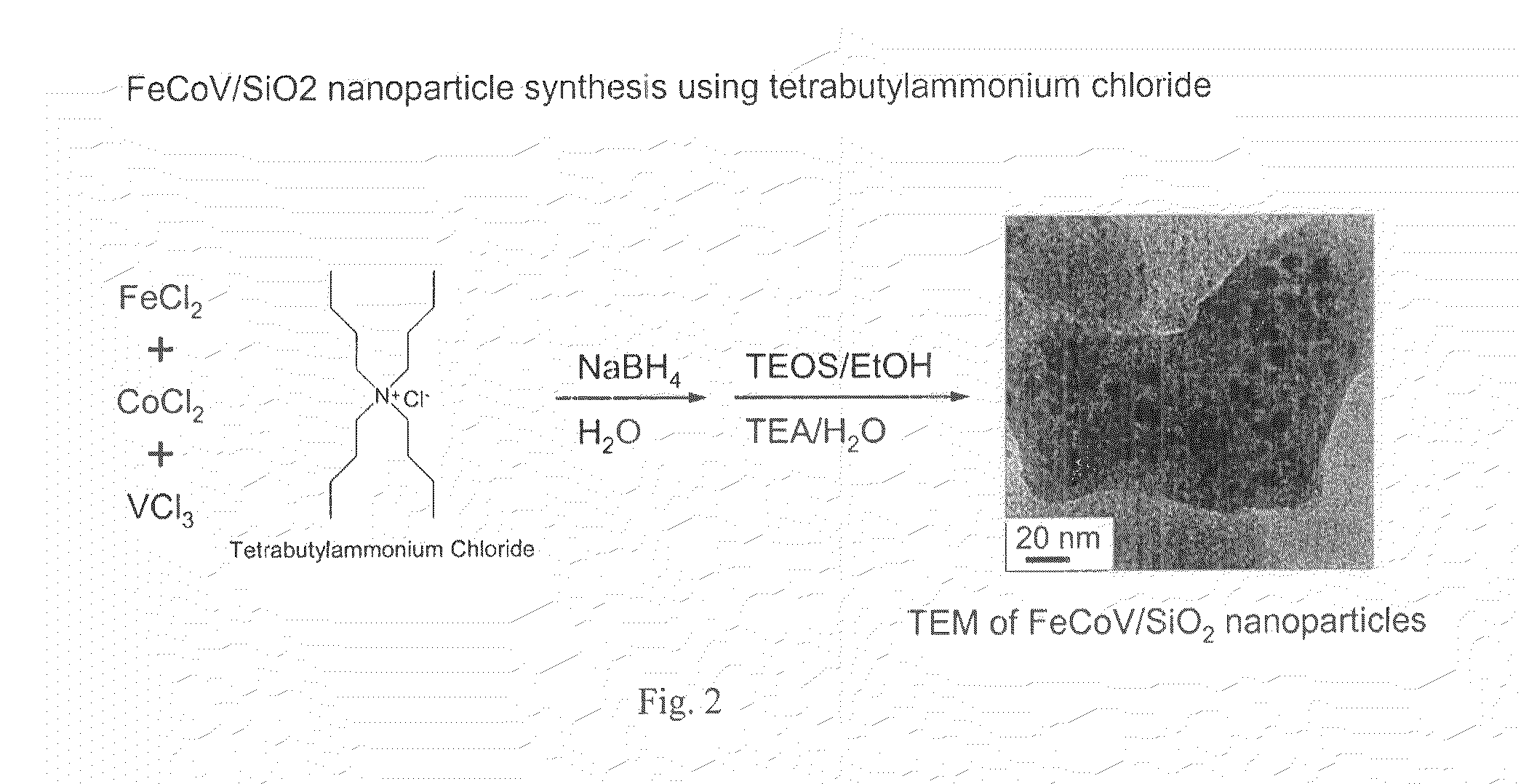Iron cobalt ternary alloy and silica magnetic core
a technology of iron cobalt ternary alloy and magnetic core, which is applied in the field of magnetic core, can solve the problems of high core loss, hysteresis loss, energy loss in the core material, etc., and achieves good mechanical properties, high temperature tolerance, and increased green strength
- Summary
- Abstract
- Description
- Claims
- Application Information
AI Technical Summary
Benefits of technology
Problems solved by technology
Method used
Image
Examples
example 1
[0052]To a reaction flask was added 1050 mL ethanol, 2.056 g NaOH, and 145.102 g tribasic sodium citrate. After the sodium hydroxide had an opportunity to dissolve, 20.967 g iron dichloride tetrahydrate, 23.786 g cobalt dichloride hexahydrate, and 0.695 g vanadium trichloride were dissolved in the reaction mixture.
[0053]24.301 g sodium borohydride were dissolved in 900 mL of ethanol.
[0054]The sodium borohydride solution was then added to the reaction. The reaction was allowed to stir for 10 additional minutes after all of the sodium borohydride was added.
[0055]The product was then purified using a washing solution of 70% H2O / 30% ethanol (by volume).
[0056]The nanoparticles were stirred for 20 minutes to fully disperse them throughout a water / triethylamine solution (1260 mL H2O and 33 mL triethylamine). 3.3 mL tetraethyl orthosilicate was then dissolved in 780 mL ethanol, and added to the stirring reaction flask. After 20 additional minutes of stirring, the product was again collected...
example 2
[0058]To a reaction flask was added 1050 mL ethanol, 1.0 g NaOH, and 11.96 g tetrabutylammonium chloride. After the sodium hydroxide had an opportunity to dissolve, 20.967 g iron dichloride tetrahydrate, 23.786 g cobalt dichloride hexahydrate, and 0.695 g vanadium trichloride were dissolved in the reaction mixture.
[0059]24.301 g sodium borohydride were dissolved in 900 mL of ethanol.
[0060]The sodium borohydride solution was then added to the reaction. The reaction was allowed to stir for 10 additional minutes after all of the sodium borohydride was added.
[0061]The product was then purified using a washing solution of 70% H2O / 30% ethanol (by volume).
[0062]The nanoparticles were stirred for 20 minutes to fully disperse them throughout a water / triethylamine solution (1260 mL H2O and 33 mL triethylamine). 3.3 mL tetraethyl orthosilicate was then dissolved in 780 mL ethanol, and added to the stirring reaction flask. After 20 additional minutes of stirring, the product was again collected...
PUM
| Property | Measurement | Unit |
|---|---|---|
| particle size | aaaaa | aaaaa |
| size | aaaaa | aaaaa |
| particle size | aaaaa | aaaaa |
Abstract
Description
Claims
Application Information
 Login to View More
Login to View More - R&D
- Intellectual Property
- Life Sciences
- Materials
- Tech Scout
- Unparalleled Data Quality
- Higher Quality Content
- 60% Fewer Hallucinations
Browse by: Latest US Patents, China's latest patents, Technical Efficacy Thesaurus, Application Domain, Technology Topic, Popular Technical Reports.
© 2025 PatSnap. All rights reserved.Legal|Privacy policy|Modern Slavery Act Transparency Statement|Sitemap|About US| Contact US: help@patsnap.com



